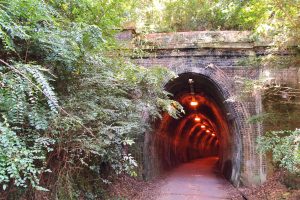Love them or hate them, Lake Macquarie is home to a variety of snakes. Just a few of our natives include the beautiful diamond python, golden crowned snakes, tree snakes, yellow faced whip snakes, red bellied blacks and eastern browns. As the weather warms up all the common snakes in Lake Macquarie that have been sleeping off the winter chill, start to become more active during the day.
Warm weather = snakes
In spring, male snakes come out in search of a female and will travel pretty long distances to find the perfect mate. Once the breeding season is over, you’re just as likely to come across a male as you would a female. Snakes remain active through until autumn and then find somewhere warm to pass the winter. Although on a warm winter’s day, you may still encounter one. While we have a number of different snakes living in Lake Macquarie, there are two species, in particular, you should know about. These are the Red Bellied Black snakes, and Eastern Browns. Let’s have a look at them in a little more detail.
Red bellied black snakes
Red bellied blacks, like to live near water. You’ll find them near streams, lagoons or creeks. They hide in long grass, under large rocks or in burrows. Red bellied blacks are classed as a medium-sized snake, growing on average to between 1.5 m and 2 m in length. Both the head and body are black, except sometimes for the snout which can be light brown. Their underneath is a bright red which fades to orange or pink in the middle.
This species of snake is one of the most commonly encountered in our area. However don’t fear, because they aren’t out to attack humans. In fact, they’re more likely to freeze and flee. Sometimes the place they might flee to, just so happens to be behind you, so it may seem like they’re about to attack. If you encounter this snake leave it alone and it will get out of your way. With no human deaths recorded by these snakes, you now know they just need to be left alone.
Eastern brown snakes
Another medium sized snake is the eastern brown snake, which grows to an average of 1.5 metres in length. Their ‘brown’ colouring can range between anything from a milky coffee colour to almost black. Younger eastern brown snakes can have darker bands running down their bodies. Their heads and bodies are normally the same colour and their eyes usually have an orange iris with a large black pupil.
These snakes are happy living among humans. They’ll find shelter underneath man-made structures in our gardens as well as enjoying living in long grass, woodlands or scrub. However, because the eastern brown is a nervous snake, this species is prone to attack. They will strike if they feel under attack. They’ll rear up before striking and that’s something you don’t want to see. Be very careful of this species. It’s highly venomous to humans and is responsible for the highest percentage of human deaths by species in Australia.
First aid for snake bites
Surprisingly, it’s common not to feel a snake bite. If you think you’ve been bitten seek immediate medical attention. Call 000 immediately regardless of the type of snake. If you’re with someone that has been bitten administer first aid immediately.
- Get away from the snake.
- Calm the person and phone 000.
- Apply a pressure immobilisation bandage.
- First, wrap a bandage firmly around the site of the bite.
- You should not be able to slip a finger under the bandage.
- Next, immobilise the whole limb starting at fingers or toes and bandaging all the way up.
- If the bite is on the torso and you can’t bandage, apply pressure.
- Mark the bandage with the location of the bite if possible.
- DO NOT apply a tourniquet, cut the wound or try to suck out the poison.
How to avoid a snake
Avoiding coming into contact with a common snake in Lake Macquarie is your best course of action. We asked a previous Lake Mac resident and expert snake catcher, Jake Hansen, what we should do. Here are his top 7 tips.
- Don’t give snakes somewhere they can hide. If you’ve got a pile of rocks, some loose sheets of tin, a pile of rubbish or a stack of wood they’ll find it. If you have spaces between rocks in your rock garden or retaining walls they’ll like those too. Seal all of those spaces up.
- Is your home or shed sat on a concrete slab? If there are gaps or holes underneath it that’s a perfect place for a snake to hide. Snakes will not dig holes but they will use holes dug by other animals. Make sure these holes are all filled in.
- If your plants are low and sit on the ground, this gives a snake a perfect place to hide and bask in the sun. Fill your garden with plants where you can prune the lower leaves and branches so you have a gap between the earth and the plant. Snakes will move on to find a place where they feel hidden and safe.
- A 5-star hotel for a snake is a pool or pond, overgrown shrubs and a retaining wall with lots of gaps to hide in. Make sure you cut back bushes and fill in any holes in your walls.
- On a hot day, a snake will be looking for somewhere to cool off just like you and your home, with its air conditioning running. Make sure you have a weather strip fitted along the base of all your doors. A small gap is accessible for a snake. They can squeeze themselves through a gap that is approximately ⅓ of their thickness.
- Got chooks? Make sure you’re not leaving out food that attracts rats. Keep your garden clean and remove uneaten food. If you’ve got rats, then you’ve got a fast-food outlet for snakes.
Common snakes in Lake Macquarie
So, what should you do if you see a snake in your yard? Stand back, watch it and it will go. If you have young children or pets and you are worried then call your local snake catcher. This will keep you and the snake safe. Snakes are beautiful, fascinating animals that are native to this land and learning to live alongside them safely benefits us all.
If you’re interested in finding out about funnel web spiders, read this: Funnel web spiders at large in Lake Macquarie
References:
Expert Snake Catcher – Orange Snake Catcher: Facebook page {Accessed November 2020}
Health Direct: Snake Bites {Accessed November 2020}
Australian Geographic: Australias 10 Most Dangerous Snakes {Accessed November 2020}
Red bellied black snake Australian Museum {Accessed November 2020}
Eastern brown snake Australian Museum {Accessed November 2020}



















